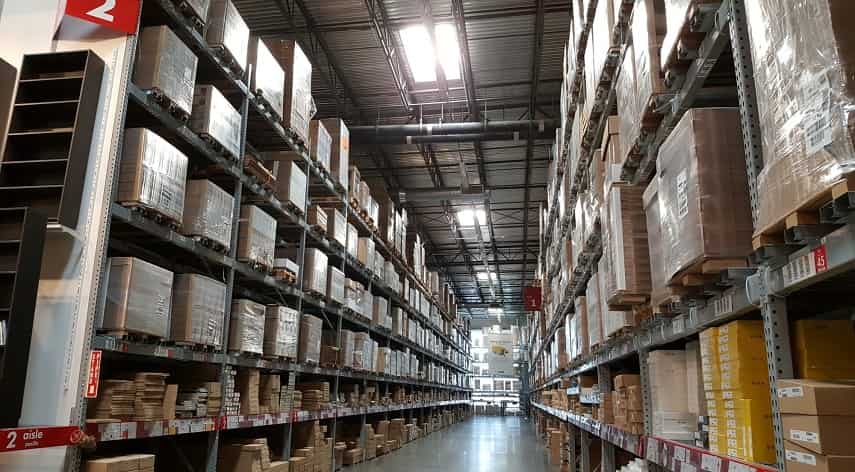How to Choose the Best Racking Systems for Warehouses

What type of racking systems should you install if you’re planning a warehouse remodel?
Racking systems keep your warehouse organized. They protect your inventory from the elements and keep it visible so storage employees don’t have to hunt for it.
But not all racking systems are created equal. The racking system that works well for one warehouse might not work well for the next. That’s because every warehouse has unique needs.
If you’re considering warehousing remodeling, you need to pick your racking system wisely. Here are a few key points to keep in mind so you can choose the best racking systems for warehouses.
Table of Contents
ToggleDetermine the Type of Products You Will Be Storing
It is important to take into account the type of products that you will store in the warehouse. For example, if the majority of the products are large and bulky, then a system designed for storing smaller items may not be the best option.
Conversely, if the products are smaller and more delicate, then a system designed for storing larger and more durable items may not be the best option. By taking the time to determine the type of products that you will store in the warehouse, businesses can ensure that they are choosing the best type of racking system for their needs.
Consider the Size of Your Warehouse
The size of your warehouse will dictate the best racking system for your needs. If you have a large warehouse, you will need a system that can accommodate a high volume of inventory.
If you have a smaller warehouse, you will need a system that is more compact and can be easily expanded as your business grows. Whichever system you choose, it is important to ensure that it is able to accommodate the specific needs of the warehouse in order to maximize space and efficiency.
Set a Budget
If you want to purchase the best racking systems for warehouses, you need to set a budget. By knowing how much you can spend, you can focus your search on products that fit your price range. This will make it easier to find the best racks for your specific needs.
Understand the Different Types of Racks
There are many different types of racks available for warehouses, so it is important to set a budget before choosing a system. The most popular racks are pallet racks, which come in various sizes and styles. Other options include cantilever racks, drive-in racks, and push-back racks.
Pallet Racks
In industrial applications, pallet racks store materials on pallets. Because of the weight and size of the pallets, these racks are very strong and durable.
They are also very versatile and used in a variety of applications. In most cases, they’re used to store heavy-duty materials, such as metal or wood.
If you are considering this type of rack, you should also look into pallet rack protectors. These protectors reduce racking damage – saving you time, money and hassle.
Cantilever Racks
A cantilever rack is a type of racking system that uses cantilevers, or horizontal supports, to store heavy or bulky items. The cantilevers protrude from the uprights, or vertical supports, and can be adjusted to accommodate different loads.
They are heavy-duty storage racks designed to hold heavy, bulky loads. They are typically made of steel or aluminum and can be either single-sided or double-sided. They’re used to store lumber, pipes, and other long, heavy items that need to be kept off the ground and away from a wall.
Drive-in Racks
A drive-in rack is a storage system that allows vehicles to drive into and out of the loading and unloading positions. This type of rack is used for the storage of bulk items, heavy equipment, and other materials that are difficult to load and unload by hand. They’re used in environments where space is limited and forklifts are the primary means of retrieving materials from the racks.
They provide a high-density storage solution for a variety of applications. This includes warehouses, distribution centers, and manufacturing facilities.
Push-Back Racks
PushBack Racks use a system of rails and carts that allow pallets to be stored 2 or more deep on the rails. The carts are attached to the rails and are pushed back as new inventory is loaded in, creating a Last In, First Out (LIFO) inventory system. This allows for efficient storage and retrieval of materials while maximizing space utilization.
Mezzanine racks
Designed for multi-level applications to create an additional storage area on a second level. This is perfect for businesses that need to store more items than they have space for on the ground floor. They are also perfect for businesses that need to store heavy items, as they can support a lot of weight.
Think About the Level of Automation You Require
One of the most important factors is the level of automation required. There are many different levels of automation available, from completely manual systems to fully automated systems. The level of automation required will vary based on the type and volume of products being stored in the warehouse.
If you have a high-volume warehouse with a lot of product turnover, you’ll need a more advanced system that can handle the increased workload. On the other hand, if you have a smaller warehouse with less product turnover, you can get by with a less advanced system. It’s all about finding the right balance for your particular situation.
Get Expert Help
Warehouse racks come in many different sizes, shapes, and styles, so it’s important to consult with an expert to find the best option for your needs. They will be able to help you determine the best way to utilize the space in your warehouse, and how to best store the products you need to rack. With their help, you can be sure to get the most efficient and effective storage solution for your warehouse.
Getting the Right Racking Systems for Warehouses
After reading this article, you should have a good understanding of the different types of racking systems for warehouses and the factors to consider when choosing the best one for your warehouse. Cost, durability, and flexibility are all important. The right system will depend on the specific needs of your warehouse.
If you need help deciding which system is right for you, contact a warehouse design and storage consultant. They will be able to help you select the best racking system based on your needs and budget.
For more commercial and industrial tips, check out some of our other helpful guides.
Alfred Williams, a distinguished business writer, navigates the corporate landscape with finesse. His articles offer invaluable insights into the dynamic world of business. Alfred's expertise shines, providing readers with a trustworthy guide through the complexities of modern commerce.
Recommended For You
Spread the loveThe name Broderick Bevineau makes you think of new ideas and starting your own business. Bevineau has made
Spread the loveThe popularity of Airbnb has paved the way for many entrepreneurs to build businesses in the short-term rental
Spread the loveCreating a well-designed and functional website starts long before coding begins. The prototyping phase is a critical step




